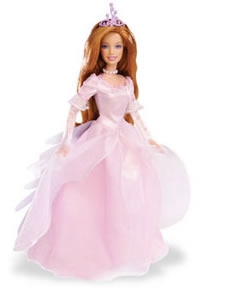The world of childrens’ toys teems with mutated reptiles in sewers, strong men bent on mastering the universe, and helpless, vain women with expensive tastes in fashions.
Toyland today is a post-modern and post-Cold War world, where GI-Joe battle Third World terrorists and the heavens are besieged by weird, quasi-human “Mosquitors” whose translucent stomachs glow with the blood they’ve sucked from their victims.
Far from the star wars and geopolitics, pony princesses braid their manes with sparkling diamonds and prepare for a cotillion. Meanwhile, in “Care-A-Lot,” Cheer Bear and Tenderheart Bear prepare for a trip to “ The Forest of Feelings” to visit friends and relatives.
Toyland’s surreal landscape and bizarre species are apt to bewilder and bemuse Christmas-shopping parents. However, toyland is a serious business which has begun to arrest and retard childrens’ psychological and emotional development, according to Nancy Carlsson-Paige and Diane Levin, authors of “Who’s Calling the Shots?” a book on the war toys industry.
 Approaching the subject of toys and child’s play in 20th-century America, the authors berate greedy corporations and cynical government “de-regulators.”
Approaching the subject of toys and child’s play in 20th-century America, the authors berate greedy corporations and cynical government “de-regulators.”
Perhaps they don’t go far enough in blaming parents for allowing their kids’ minds to be free markets for products that promote stereotypes about boys and girls, violent approaches to resolving conflicts, and a materialistic concern for beauty and wealth.
However, the authors take a useful tack of explaining in clear and understandable terms the changing nature of the toy business, and offering practical suggestions for parents who want to regain control over their kids’ playtime and playthings.
They contend that the toy industry has been able to wrest power from the parents because the Reagan Administration deregulated children’s television. Stations can now air kids’ shows that are, in effect, “program-length commercials” for toys.
Deregulation has proven to be a boon to toy makers, who now sell more than $1-billion worth of war toys annually and thousands of licensed products linked to such “shows” as Teenage Mutant Ninja Turtles, Masters of the Universe, Rambo and GI-Joe.
Reviewing the best-selling Christmas toys in the years since deregulation (the top three are Nintendo, He-Man and Barbie), Carlsson-Paige and Levin conclude that toys have become more violent and more apt to involve the child in imitation the actions of TV cartoon heroes.
Stereotypes In Pink And Blue
In this brave new world, toys are either pink or blue – for girls or boys, they say. Activities promoted for both sexes are primarily related to violence and menace, as is the case with the Nintendo video game line, 80 percent of which is “violent,” according to the authors.
Boys’ toys involve them “in life and death issues and keep them active and busy trying to ‘save the world.’”
 Boys are encouraged to be aggressive, unfeeling and preoccupied with domination, Levin says. But popular girls’ toys, such as the Barbie and Jem line of dolls, encourage girls to be obsessed with “appearances,” and even provide girls with a standard of beauty: white skin, hour-glass figures, expensive wardrobes, manicures and hairstyles.
Boys are encouraged to be aggressive, unfeeling and preoccupied with domination, Levin says. But popular girls’ toys, such as the Barbie and Jem line of dolls, encourage girls to be obsessed with “appearances,” and even provide girls with a standard of beauty: white skin, hour-glass figures, expensive wardrobes, manicures and hairstyles.
Other girls’ toys , such as the Care Bear and My Little Pony lines, channel girls into play that focuses on such “‘gentle’ feelings as caring, sharing, and nurturance, or sadness and helplessness,” they say.
The social consequence of all this child’s play, the authors’ conclude, is that both boys and girls are shunted into play that limits their growth and range of experiences.
Boys’ play doesn’t help them learn how to cooperate or solve problems amicably, and it represses any inclinations they might have toward feelings of tenderness and empathy. Girls’ play doesn’t give them a chance to be independent or self-assertive. It also limits their use of muscle-power and motor skills, and it doesn’t give then the opportunity to learn about how the physical world works and how to control it.
Tips for Changing Play
In “Calling the Shots,” Carlsson-Paige and Levin suggest that parents get involved in their child’s play.
“You might say, ‘I see that GI Joe and Cobra are fighting again,’ or ‘It looks like you a different way to trap Skeletor,’” they suggest. “Comments like this show that you see and appreciate what is happening in the play, and can lead a child to a deeper level of involvement, or a new idea or direction for play.”
They stress the need for parents to be “non-judgmental.”
Rather than telling kids their shows or toys are mean or disgusting, it’s better to ask questions like: “‘Why do you think He-Man solves all of his problems by fighting?’ or ‘How do you think He-Man feels when he punches that guy?’”
They also encourage parents to promote play among girls and boys that expands their behaviors and skills beyond sexual stereotypes.
For instance, as a first step in weening a little girl from her fascination with dolls, parents could help her build a dollhouse and doll furniture with scraps of wood and paper and a box or a carton. Boys can be encouraged to play dramatically with such props as pots and pans, bandages, baby blankets and dolls, in addition to their favorite action figures.
Caretakers of The Nation’s Children
Toy makers have become, “caretakers of the nation’s children,” Carlsson-Paige and Levin conclude.
Without any public policy debate, toy makers have assumed “a growing influence over children’s play, thoughts and desires.” The influence has been a negative one, they contend, based more on the profit motive than the developmental needs of children.
To regain some measure of control over their children’s development, they suggest parents be lobbying for a ban on the sale of war toys and a restoration of public regulation of children’s television.
Only those who measures will restore their rights as parents and their children’s “right to play”—a right, incidentally, that is guaranteed under the United Nation’s declaration on “The Right of the Child.”
First published in The Evangelist (December 13, 1990)
© David Scott, 2009. All rights reserved.


